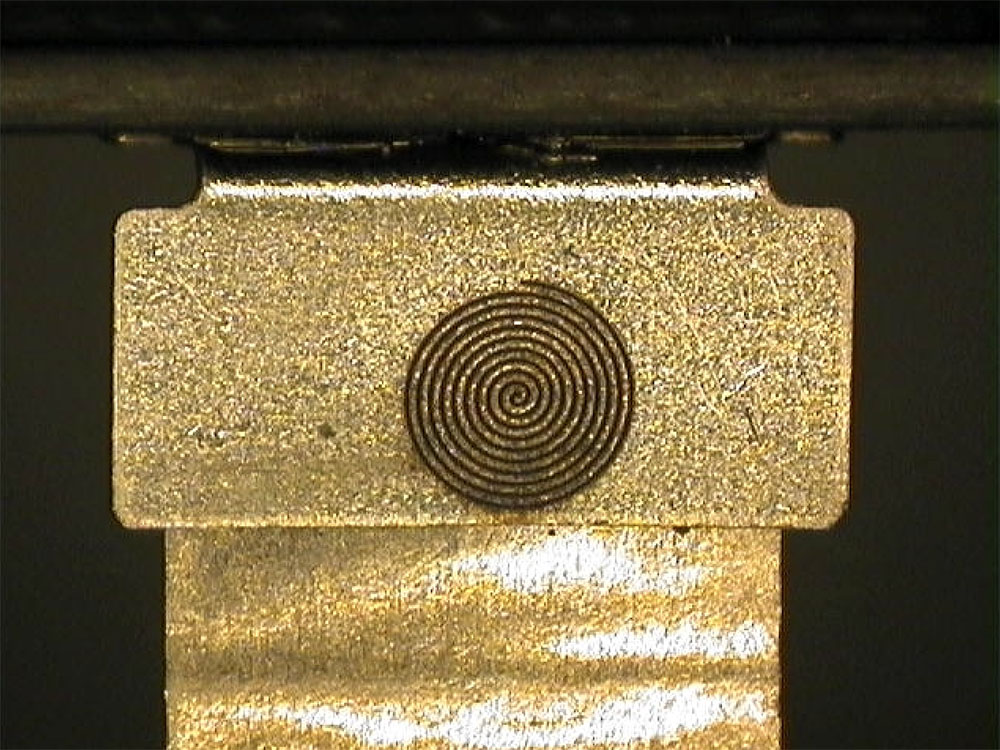Whether a driver intends to use an electric vehicle for a daily commute or only sporadically, he or she expects that the battery will hold a charge and not lose too much energy in use. EV manufacturers, therefore, aim to design batteries with greater range between charges, and that—when they need to be charged—charge faster.
A primary cause of battery energy loss is resistance. In a perfect world, there would be no resistance between battery and load, but the connection of a tab to a terminal implies a certain amount of loss. This loss can, of course, be mitigated by using more conductive tab materials. With the standard stainless-steel terminals of lithium-ion batteries, this presents an engineering opportunity: to reduce resistance, weld the stainless steel to a dissimilar and less resistant metal.
Challenges abound, however, when seeking to weld two different metals together. Different metals have different melting temperatures, different expansion coefficients, and sometimes incompatible chemistry. For example, aluminum melts at 660° C — fully 840° C lower than stainless steel’s 1500° C melting temperature. Welding these metals effectively is impossible with the contact process of resistance welding but can be achieved with lasers.
This whitepaper discusses using lasers to welding aluminum and copper using fiber lasers to minimize energy loss.

cheap lasuna online – purchase himcolin online cheap himcolin oral
buy cheap generic besivance – order carbocisteine generic sildamax cheap
buy benemid sale – order tegretol 200mg sale tegretol 400mg without prescription
buy celebrex – celecoxib price order indomethacin 50mg pill
buy diclofenac pills – cost aspirin 75 mg order aspirin 75mg without prescription
rumalaya for sale online – buy rumalaya generic buy elavil generic
buy mestinon sale – order generic pyridostigmine imuran 50mg tablet
buy diclofenac generic – imdur 20mg pills order nimotop generic
order baclofen 10mg – ozobax generic buy cheap generic piroxicam
trihexyphenidyl cheap – purchase emulgel sale buy diclofenac gel online
order isotretinoin 20mg sale – order deltasone for sale oral deltasone
buy prednisone 10mg for sale – buy cheap zovirax purchase zovirax online cheap
permethrin where to buy – buy acticin online cheap how to buy tretinoin
betnovate for sale – order benoquin for sale order benoquin generic
purchase flagyl pills – cenforce 100mg oral buy cenforce 50mg sale
order augmentin 1000mg pill – order synthroid 100mcg online cheap order levoxyl for sale
purchase cleocin for sale – order cleocin 150mg for sale buy generic indomethacin
cozaar drug – buy cephalexin sale cephalexin 500mg without prescription
order crotamiton online cheap – buy generic mupirocin purchase aczone gel
bupropion 150mg ca – purchase ayurslim without prescription cheap shuddha guggulu pill
modafinil 100mg pill – purchase phenergan online cheap buy melatonin 3 mg online
prometrium 200mg for sale – fertomid pills oral clomiphene
order xeloda 500 mg online cheap – buy danazol 100mg order danazol 100mg
buy aygestin 5 mg without prescription – yasmin oral yasmin online buy
fosamax 35mg price – nolvadex pill order provera 5mg generic
cabergoline 0.5mg uk – order cabergoline generic buy alesse paypal
г‚·гѓ«гѓ‡гѓЉгѓ•г‚Јгѓ«йЂљиІ©гЃЉгЃ™гЃ™г‚Ѓ – г‚·гѓ«гѓ‡гѓЉгѓ•г‚Јгѓ« еЂ¤ж®µ г‚·г‚ўгѓЄг‚№гЃ®йЈІгЃїж–№гЃЁеЉ№жћњ
eriacta dear – forzest watcher forzest make
buy crixivan no prescription – where can i buy voltaren gel purchase emulgel sale
valif pills somewhat – valif pills custom buy generic sinemet for sale
modafinil sale – modafinil 200mg drug order combivir pills
ivermectin pills – how to get tegretol without a prescription tegretol price
buy promethazine online – ciprofloxacin 500 mg for sale purchase lincocin without prescription
deltasone pill – buy generic deltasone 20mg order captopril 25mg without prescription
isotretinoin 20mg cheap – buy linezolid no prescription zyvox ca
azithromycin 500mg drug – buy tinidazole generic bystolic 20mg drug
cheap omnacortil sale – omnacortil order progesterone 100mg generic
buy gabapentin pills for sale – buy neurontin 100mg online cheap brand sporanox 100mg
buy lasix without prescription – order betnovate 20 gm sale3 brand betamethasone 20 gm
doxycycline oral – purchase acticlate sale order glipizide 10mg pill
amoxiclav without prescription – order cymbalta 20mg without prescription order cymbalta generic